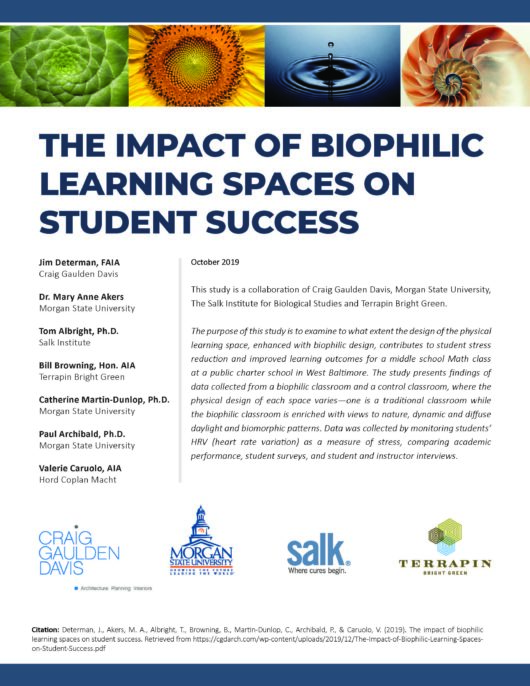Contribution
The Impact of Biophilic Learning Spaces on Student Success
Abstract
This study is a collaboration of Craig Gaulden Davis, Morgan State University, The Salk Institute for Biological Studies and Terrapin Bright Green. It was originally published on AIA’s Building Research Information Knowledgebase
The purpose of this study is to examine the extent to which the design of the physical learning space, enhanced with biophilic design, contributes to student stress reduction and improved learning outcomes for a middle school math class at a public charter school in West Baltimore. The study presents findings of data collected from a biophilic classroom and a control classroom, where the physical design of each space varies—one is a traditional classroom while the biophilic classroom is enriched with views to nature, dynamic and diffuse daylight and biomorphic patterns. Data was collected by monitoring students’ HRV (heart rate variation) as a measure of stress, comparing academic performance, student surveys, and student and instructor interviews. The findings indicate that biophilic enhancements of the classroom are strongly associated with reduced student stress and enhanced learning outcomes.

